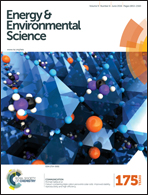Performance and design considerations for lithium excess layered oxide positive electrode materials for lithium ion batteries
Abstract
The Li-excess oxide compound is one of the most promising positive electrode materials for next generation batteries exhibiting high capacities of >300 mA h g−1 due to the unconventional participation of the oxygen anion redox in the charge compensation mechanism. However, its synthesis has been proven to be highly sensitive to varying conditions and parameters where nanoscale phase separation may occur that affects the overall battery performance and life. In addition, several thermodynamic and kinetic drawbacks including large first cycle irreversible capacity, poor rate capability, voltage fading, and surface structural transformation need to be addressed in order to reach commercialization. This review will focus on the recent progress and performance trends over the years and provide several guidelines and design considerations based on the library of work done on this particular class of materials.



 Please wait while we load your content...
Please wait while we load your content...